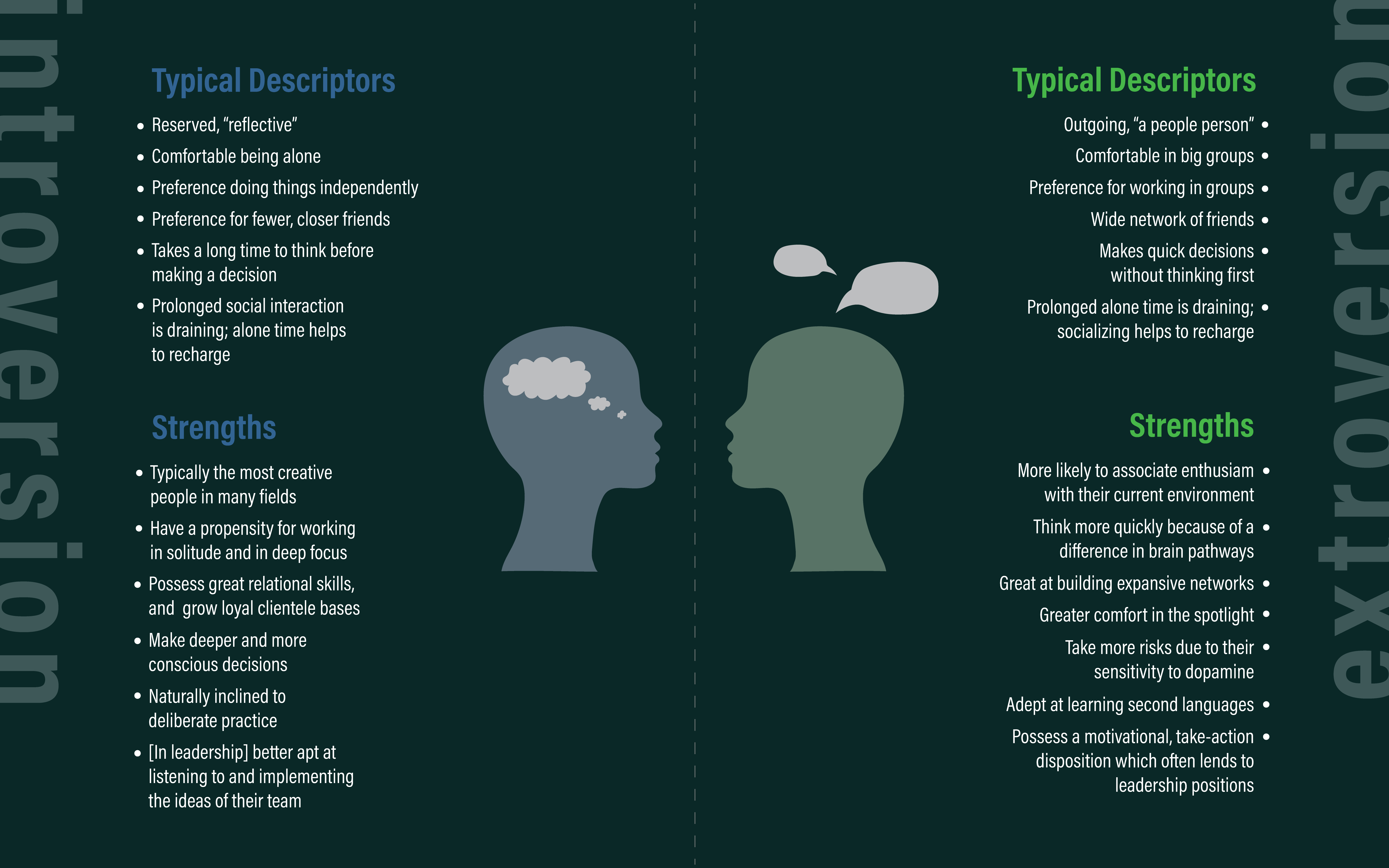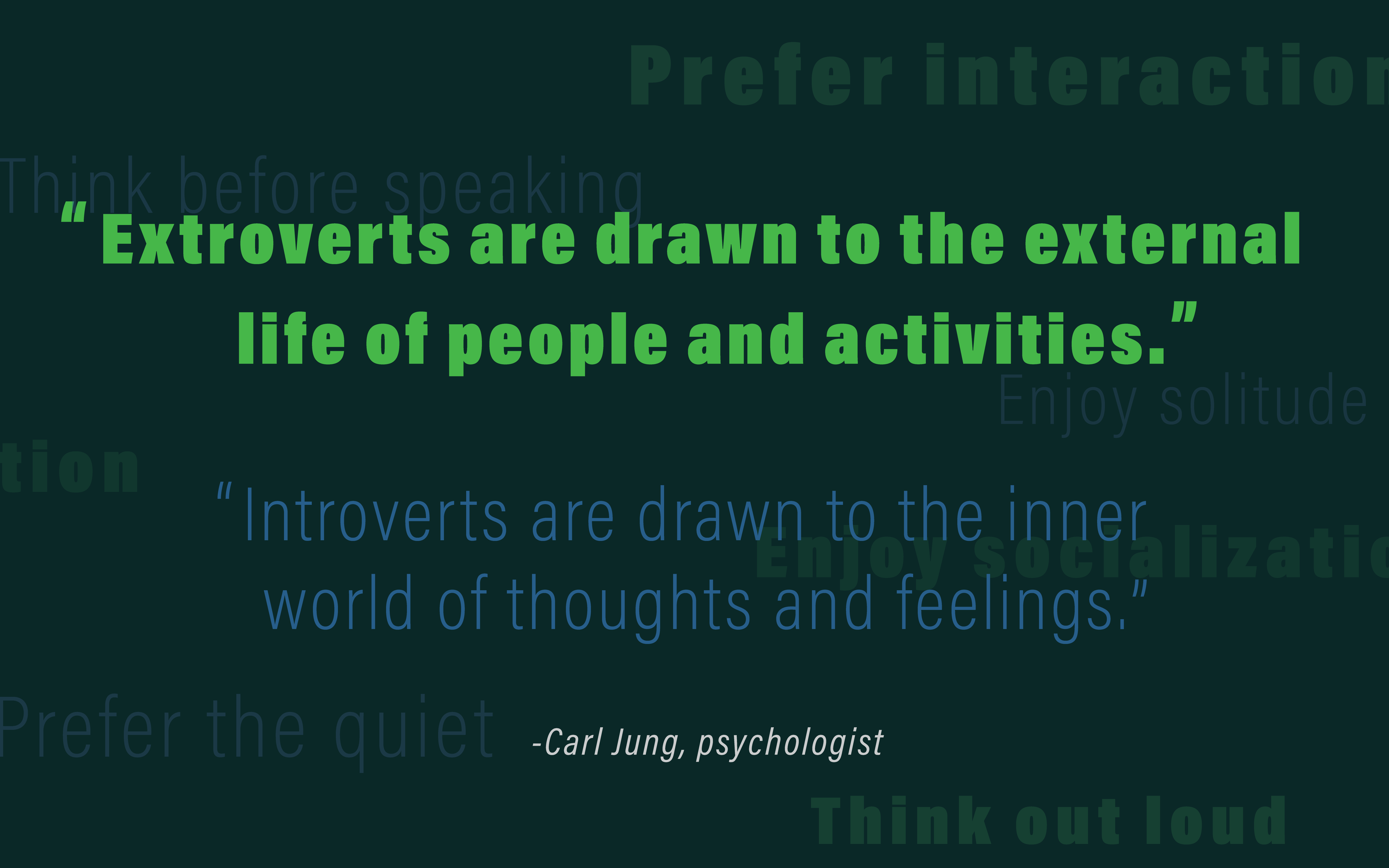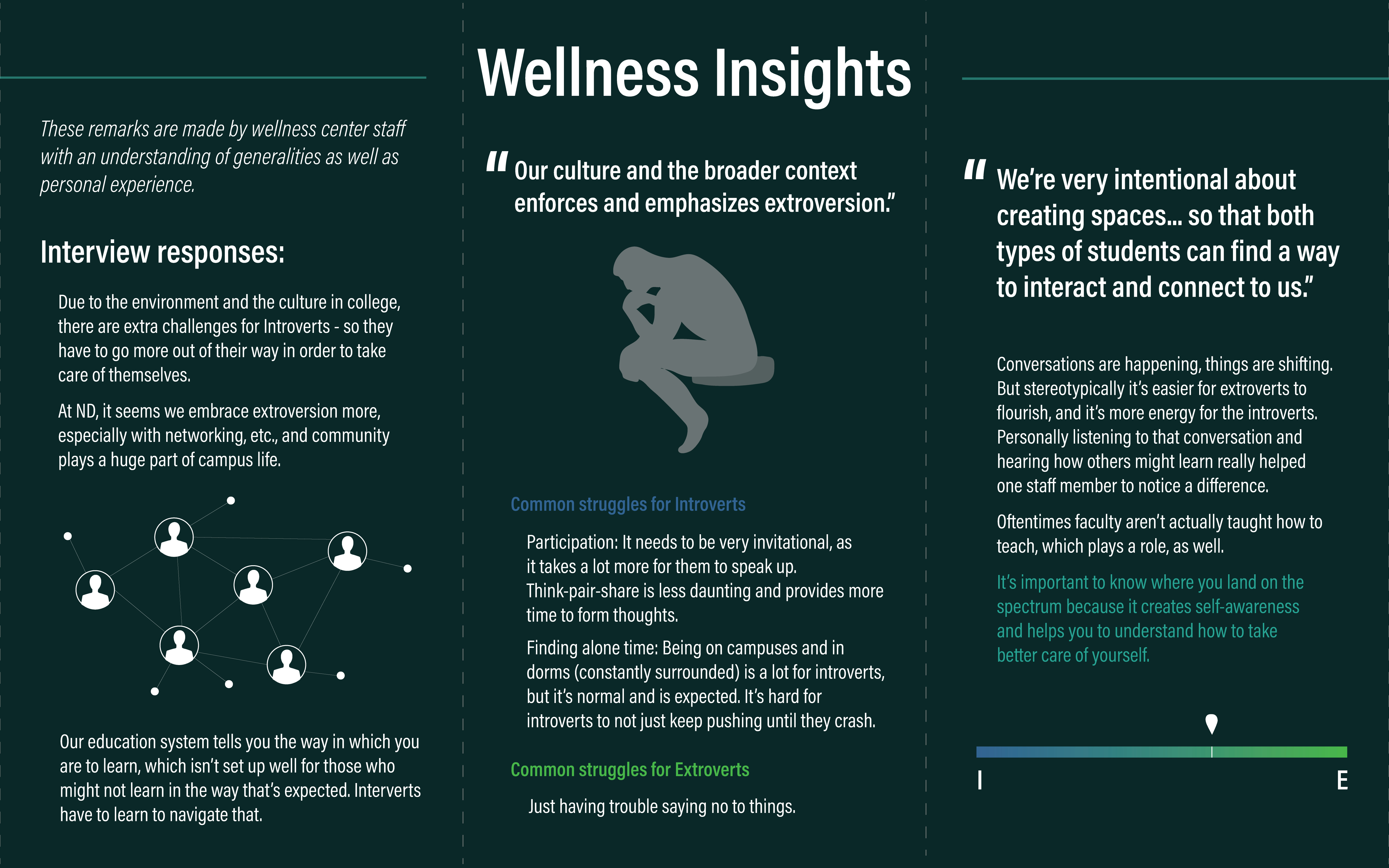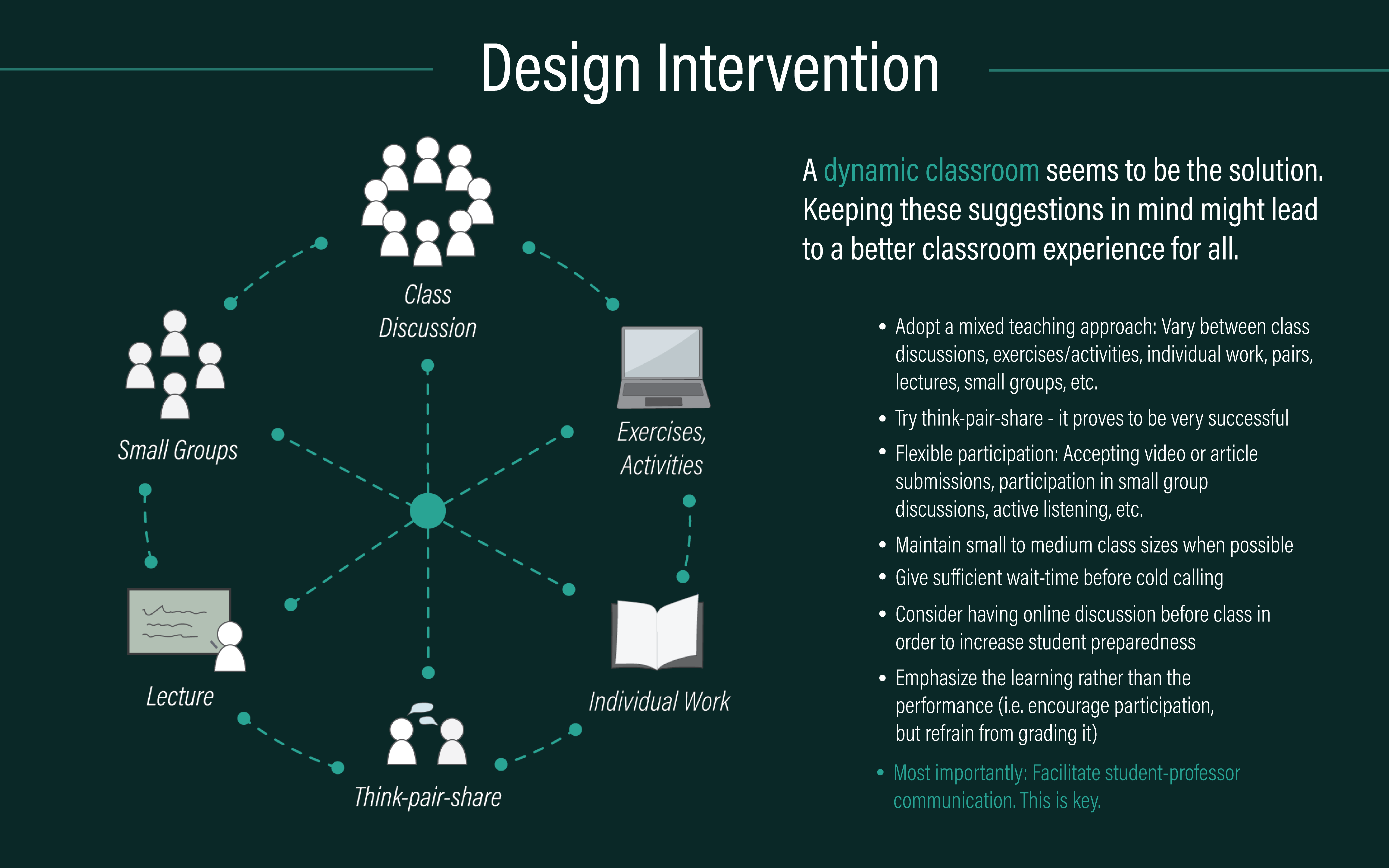Rebecca Lam
BA Honors | Visual Communication Design
DESIGNER BIO
My name is Becca Lam and I’m a visual communication design major with a French supplementary major and a minor in European studies – a mouthful, I know. I’m from a small town in the Chicago suburbs and am incredibly passionate about dance. In fact, I’ve been highly involved in three different dance groups all throughout my four years on Notre Dame campus. Part of what draws me to the dance world is also what brings me to the design world: self-love, mutual understanding, and acceptance. Heavily emphasized among the dance community, I strive to design in a way that encourages the growth of these three things in today’s competitive and ever-changing society. As design and dance are both very expressive, visual modalities stand out as a personal strength and therefore present a significant means of communication and impact.
DESIGNER STATEMENT
Introverts and extroverts lead very different lives in today’s world, due to their fundamental differences in processing the things around them. My thesis explores this idea as it relates to society’s tendency to promote an extroverted world, and how this specifically impacts the collegiate academic sector. With the aforementioned questions in mind, I interviewed several students, professors, and wellness center employees in order to assess the status-quo. Focusing on the intersection of extrovertedness and its impact on academic performance, I’m interested in not only how this key personality trait might play into one’s own needs and preferences but also how introverts might think about extroverts in general, and vice versa. From these interviews alongside extensive research, I’ve come to the conclusion that today’s current classroom habits and environments are changing – but still typically favor the extrovert and consequently put introverts at a disadvantage. While personality is only part of one’s learning experience, it seems to make a sizable impact on access to conducive learning and resultant academic performance. A push outside of one’s comfort zone is necessary, although it should be a push for all, rather than some. The findings of my research propose insights and advice from interviews which, when compiled, seem to suggest a need for reevaluation of the typical classroom environment and a resultant change in tendencies – some of which are already beginning to be implemented by some professors. In order to bring out and improve the strengths of both introverted and extroverted students, a flexible, mixed teaching approach with an understanding of both personality types is the key to success for all students. Access to knowledge should be equally accessible to all, rather than favoring one type of student over another.
Introversion & Extroversion: Exploring optimal learning environments







This video simulates the proposed interaction with my exhibition. The data points are taken from survey results, representing the first 100 responses. Anyone and everyone was encouraged to participate. The light blue dots are where each person believes they are on the introversion-extroversion spectrum, and the light green dots are where they actually land according to the OCEAN personality test. “It’s important to know where you land on the spectrum because it creates self-awareness and helps you to understand how to take better care of yourself.”




